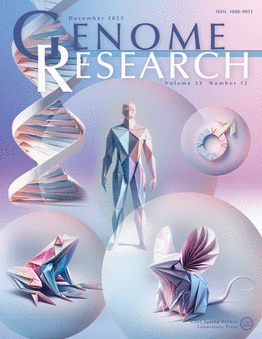影响抗性基因组和动员基因组目标富集长读程测序的因素
IF 6.2
2区 生物学
Q1 BIOCHEMISTRY & MOLECULAR BIOLOGY
引用次数: 0
摘要
我们研究了目标富集长读数测序(TELSeq)在复杂基质中检测抗菌素耐药性基因(ARGs)和移动遗传因子(MGEs)的效率。我们的目标是克服传统抗菌药耐药性(AMR)检测方法的局限性,包括缺乏灵敏度、特异性和提供详细基因组背景信息能力的短读数猎枪元基因组学。通过将基于生物素化探针的富集与长线程测序相结合,我们促进了 ARGs 的扩增和测序,从而消除了生物信息重建的需要。我们的实验设计包括人类粪便微生物群移植材料、牛粪便、原始草原土壤和模拟人类肠道微生物群落的重复实验,使我们能够研究包括基因组 DNA 输入和探针集组成在内的变量。我们的研究结果表明,与传统测序方法相比,TELSeq 显著提高了 ARGs 和 MGEs 的检出率,凸显了其在准确监测 AMR 方面的潜力。我们的研究得出的一个重要结论是,必须结合移动组图谱来更好地预测 ARGs 在微生物群落中的可转移性,因此建议在未来的研究中使用 ARG-MGE 组合探针集。我们还揭示了低投入工作流程在检测 ARG 方面的局限性,并介绍了下一步如何不断完善方案,以最大限度地减少技术变异,扩大在临床和公共卫生环境中的应用。这项工作是我们更广泛承诺的一部分,我们致力于推进各种方法,以应对 AMR 这一全球性挑战。本文章由计算机程序翻译,如有差异,请以英文原文为准。
Factors impacting target-enriched long-read sequencing of resistomes and mobilomes
We investigated the efficiency of target-enriched long-read sequencing (TELSeq) for detecting antimicrobial resistance genes (ARGs) and mobile genetic elements (MGEs) within complex matrices. We aimed to overcome limitations associated with traditional antimicrobial resistance (AMR) detection methods, including short-read shotgun metagenomics, which can lack sensitivity, specificity, and the ability to provide detailed genomic context. By combining biotinylated probe-based enrichment with long-read sequencing, we facilitated the amplification and sequencing of ARGs, eliminating the need for bioinformatic reconstruction. Our experimental design included replicates of human fecal microbiota transplant material, bovine feces, pristine prairie soil, and a mock human gut microbial community, allowing us to examine variables including genomic DNA input and probe set composition. Our findings demonstrated that TELSeq markedly improves the detection rates of ARGs and MGEs compared to traditional sequencing methods, underlining its potential for accurate AMR monitoring. A key insight from our research is the importance of incorporating mobilome profiles to better predict the transferability of ARGs within microbial communities, prompting a recommendation for the use of combined ARG–MGE probe sets for future studies. We also reveal limitations for ARG detection from low-input workflows, and describe the next steps for ongoing protocol refinement to minimize technical variability and expand utility in clinical and public health settings. This effort is part of our broader commitment to advancing methodologies that address the global challenge of AMR.
求助全文
通过发布文献求助,成功后即可免费获取论文全文。
去求助
来源期刊

Genome research
生物-生化与分子生物学
CiteScore
12.40
自引率
1.40%
发文量
140
审稿时长
6 months
期刊介绍:
Launched in 1995, Genome Research is an international, continuously published, peer-reviewed journal that focuses on research that provides novel insights into the genome biology of all organisms, including advances in genomic medicine.
Among the topics considered by the journal are genome structure and function, comparative genomics, molecular evolution, genome-scale quantitative and population genetics, proteomics, epigenomics, and systems biology. The journal also features exciting gene discoveries and reports of cutting-edge computational biology and high-throughput methodologies.
New data in these areas are published as research papers, or methods and resource reports that provide novel information on technologies or tools that will be of interest to a broad readership. Complete data sets are presented electronically on the journal''s web site where appropriate. The journal also provides Reviews, Perspectives, and Insight/Outlook articles, which present commentary on the latest advances published both here and elsewhere, placing such progress in its broader biological context.
 求助内容:
求助内容: 应助结果提醒方式:
应助结果提醒方式:


